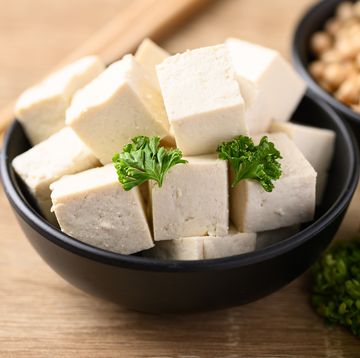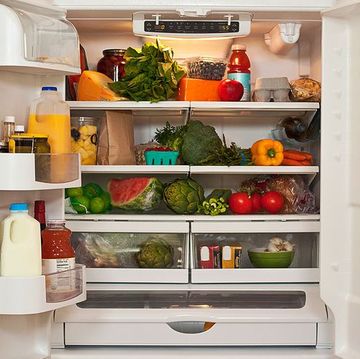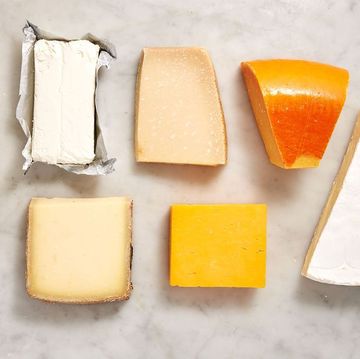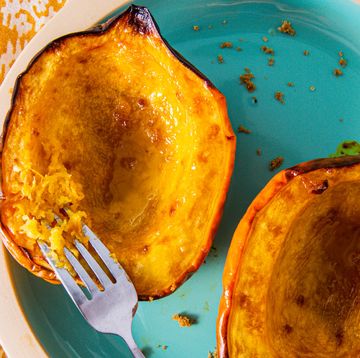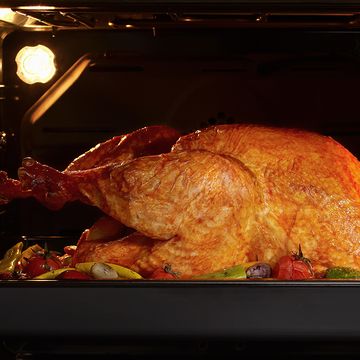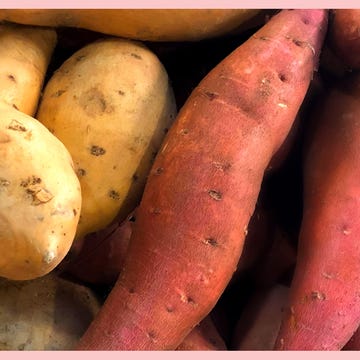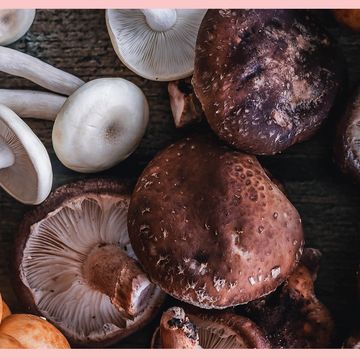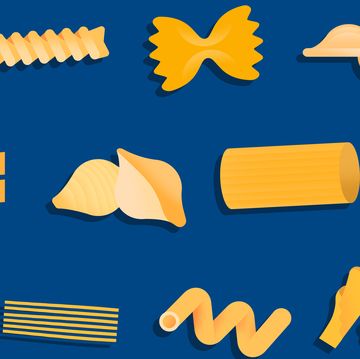Goat cheese is a staple in charcuterie boards, salads, and even mac and cheese. It can be soft and spreadable, or it can be aged in a multitude of styles. The tradition of making goat cheese stretches back centuries, but what's the process, exactly? In this video, our host Rome takes a tour of Portland Creamery in Oregon's Willamette Valley to see how goat cheese is made from start to finish.
Raising The Goats
You can't make cheese without milk, but the process really starts with raising happy goats. Portland Creamery, which has been selling their products for over a decade, sources milk from several different breeds of goats. These goats roam freely on 14 acres of land. Dr. Lauren Acton of Tempo Farm, which provides the milk for Portland Creamery's cheese, says the pasture is an essential part of the goat's lives. It provides them with space to walk and exercise naturally.
Milking The Goats
The health and happiness of the goat is also a priority during the milking process. At Tempo Farm, they follow a strict schedule based on the health of each goat's udders so that the process is never painful. First, the teats are dipped in a sanitizing solution to remove any bacteria you wouldn't want in your cheese. Next, the milk is tested by squeezing a small amount in a seed cup. The farmers check the milk to make sure it's safe to consume and not contaminated.
Once the milk is in the clear, the goat is hooked up to inflations, which are the machines that extract the milk from each teat. According to Dr. Acton, this can take anywhere from one to five minutes. Then, the farmers massage the goats and repeat a couple more times if necessary. Once all the milk has been extracted, the teats are sanitized one last time. The goats at Tempo Farm provide milk until they reach about ten years of age, which is when they typically retire.
Making The Cheese
Once the milk from Tempo Farm enters Portland Creamery's factory, it's automatically fed into a metal pasteurizing vat. The milk is then heated to at least 145° for 3o minutes, which, depending on the volume, can take up to three hours. In that same vat, the cheese is introduced to the bacterial cultures lactococcus and lactobacillus. It's also introduced to rennet, an ingredient that contains the enzyme rennin and is used to make nearly every kind of cheese. The bacteria and the rennet jumpstart the curdling process that separates the curds from the whey.
Next, salt is added for flavor and to preserve the cheese. Then the curds are stored in individual semipermeable bags. Each bag is suspended in the air over a tub to catch any remaining whey. This process is called either aging or ripening, and depending on the producer, can take anywhere from a few days to several months. At Portland Creamery, the aging process only lasts a couple of days so that the cheese is still fresh and spreadable. If it is aged for longer, you'll be left with a firmer, sharper cheese like Garrotxa.
Within each batch of milk, only about 20 percent will turn into cheese. The remaining 80 percent is the whey that drips out of the bags as the cheese ripens. If you're worried about all that wasted whey, don't be! At Portland Creamery, they save all of the whey to cook it down with sugar for roughly six hours until it turns into caramel syrup.
Finishing The Cheese
Once the aging process is complete, Portland Creamery infuses the cheese with a variety of flavors. While their flagship Oregon Chèvre is delicious on its own, they also mix in different seasonings like herbes de provence, local marionberry, and habanero, and even fun seasonal flavors like tomato jam. Regardless of what flavor you choose, each batch is hand-mixed to evenly distribute the flavors and aerate the product.
The finished cheese is then packed into a filler, then hand packed into containers for sale. Portland Creamery's cheese is available at local retailers as well as online for nationwide shipping.
Want some inspiration on how to cook with goat cheese? Check out Rome's amazing recipe for Goat Cheese Pancakes.
Gabby Romero is Delish’s editorial assistant, where she writes stories about the latest TikTok trends, develops recipes, and answers any and all of your cooking-related questions. She loves eating spicy food, collecting cookbooks, and adding a mountain of Parmesan to any dish she can.

